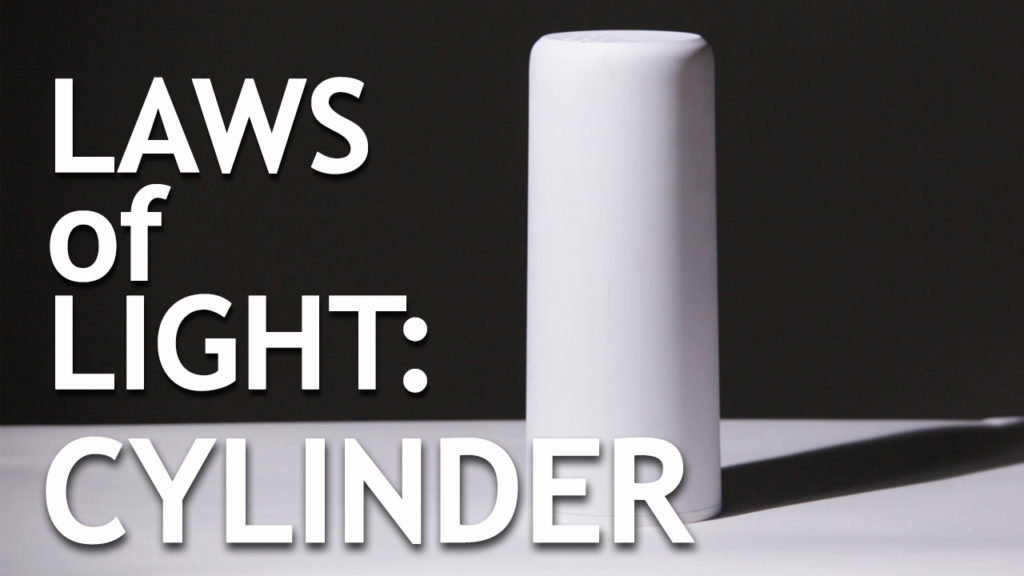It’s time for the third installment of the Laws of Light. Today we’re going to look at the cylinder, the transitional object.

Get a free month of The Great Courses Plus- click here!
Laws of Light: Cylinder
Cylinder
A cylinder is a combination of a sphere and a cube. We’ve got a round surface. This round surface gives us all the qualities of the sphere. We have a highlight side, an incident highlight, a core, a shadow, and a cast shadow. We have all five of those things happening on our cylinder. How we control the light on this is two-fold. Our light can go around, which gives us more or less highlight, or we can go up or down to create a darker or lighter surface on the top. When you have a subject that is this tall, the second issue that is created is our cast shadow.
Depth
As we get the light higher the cast shadow becomes shorter, which makes the top of our subject brighter. So if I want a short cast shadow and I’m getting too much light on the top of my cylinder, many times I’ll come in with something small, a piece of diffusion or something, and just try to hit the top of the cylinder to take that highlight down a little bit. But, if you can live with that long shadow, then raising it up and down is the easiest way to control the light on top of the cylinder.
Separation
The cylinder lives in the same world as the sphere when it comes to separation. We’ve got our light on the background, which creates our separation. We can bring a reflector in to fill the shadow from the side. Even if I get the fill card in as far as I want, I still see a little bit of the core highlight. It’s pretty hard to get rid of it completely.
Let’s take a look at some images that illustrate lighting cylinders.
So, there’s our cylinder, the transitional object. I call it the transitional object because it is now making us transition from lighting a single object, a single cube, a single sphere, to having to combine surfaces. We’re combining surfaces and that makes us have to consider our light in a much different way. If you understand how to combine surfaces, you can now shoot a sphere, a face, and a square, a car, and light both of those at the same time. You need to understand transitional objects and how they relate to actual objects in life because very few things in life are just a sphere or just a cube. Sure, you may shoot a box of cereal, you may shoot a round ball but the reality is most of the time, we’re all shooting and lighting combinations of surfaces and objects.
Our next lesson moves us one step further. We’ll combine several objects together- a ball, cube, and a cylinder- and we’re going to light them and separate them from one another. It’s going to make it more difficult but it’s going to relate more to what you’ll see in reality. You can find that here.
Keep those cameras rollin’, keep on clickin’.
-Jay P.

